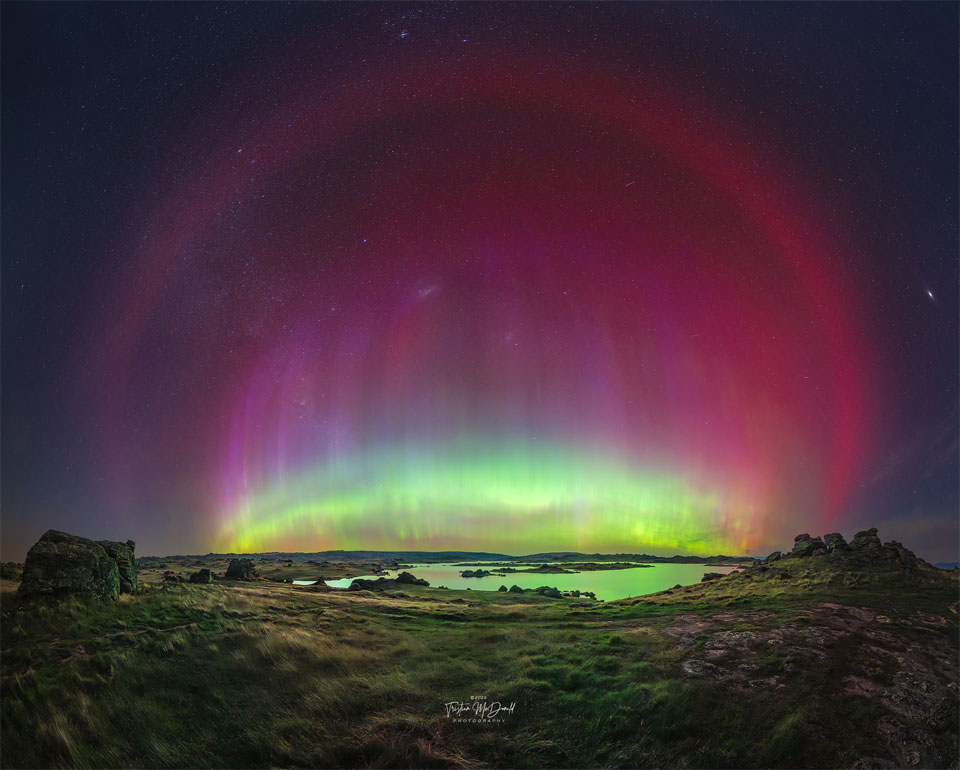2024年1月3日
A SAR Arc from New Zealand
Image Credit & Copyright: Tristian McDonald; Text: Tiffany Lewis (Michigan Tech U.)
Explanation: What is that unusual red halo surrounding this aurora? It is a Stable Auroral Red (SAR) arc. SAR arcs are rare and have only been acknowledged and studied since 1954. The featured wide-angle photograph, capturing nearly an entire SAR arc surrounding more common green and red aurora, was taken earlier this month from Poolburn, New Zealand, during an especially energetic geomagnetic storm. Why SAR arcs form remains a topic of research, but is likely related to Earth’s protective magnetic field, a field created by molten iron flowing deep inside the Earth. This magnetic field usually redirects incoming charged particles from the Sun’s wind toward the Earth’s poles. However, it also traps a ring of ions closer to the equator, where they can gain energy from the magnetosphere during high solar activity. The energetic electrons in this ion ring can collide with and excite oxygen higher in Earth’s ionosphere than typical auroras, causing the oxygen to glow red. Ongoing research has uncovered evidence that a red SAR arc can even transform into a purple and green STEVE.
Tomorrow’s picture: open space
新西兰上空的稳定极光红弧
影像提供与版权: Tristian McDonald; 文稿: Tiffany Lewis (Michigan Tech U.)
说明: 这片极光周围的不寻常红晕是什么?它是稳定极光红弧(SAR)。稳定极光红弧是种罕见的现象,于1954年以后其存在方获得证实并加以研究。这幅本月稍早摄于新西兰Poolburn聚落,时值一场格外强烈的地球磁暴肆虐期间的广角主题影像,记录了几乎完整环抱较常见的绿与红极光之稳定极光红弧。稳定极光红弧的成因,至今仍是研究的课题,但很可能和在地球内部深处流动的熔铁所产生的地球防护磁场有关。这个磁场通常会把从太阳风带来的的带电粒子,导引到地球的极区。不过,它也会在近赤道的地方拘束了一圈离子,而且在太阳活动频繁时,这些离子可以从磁层中获得能量。这个离子环里的高能电子,会撞击地球电离层里一般极光发光高度上方的氧,激发它们发出红光。目前在进行的研究,发现有迹证显示稳定极光红弧甚至会变身为紫和绿色的STEVE。 ( STEVE, Strong Thermal Emission Velocity Enhancement 增速导致的突发性热辐射)
明日的图片: open space







